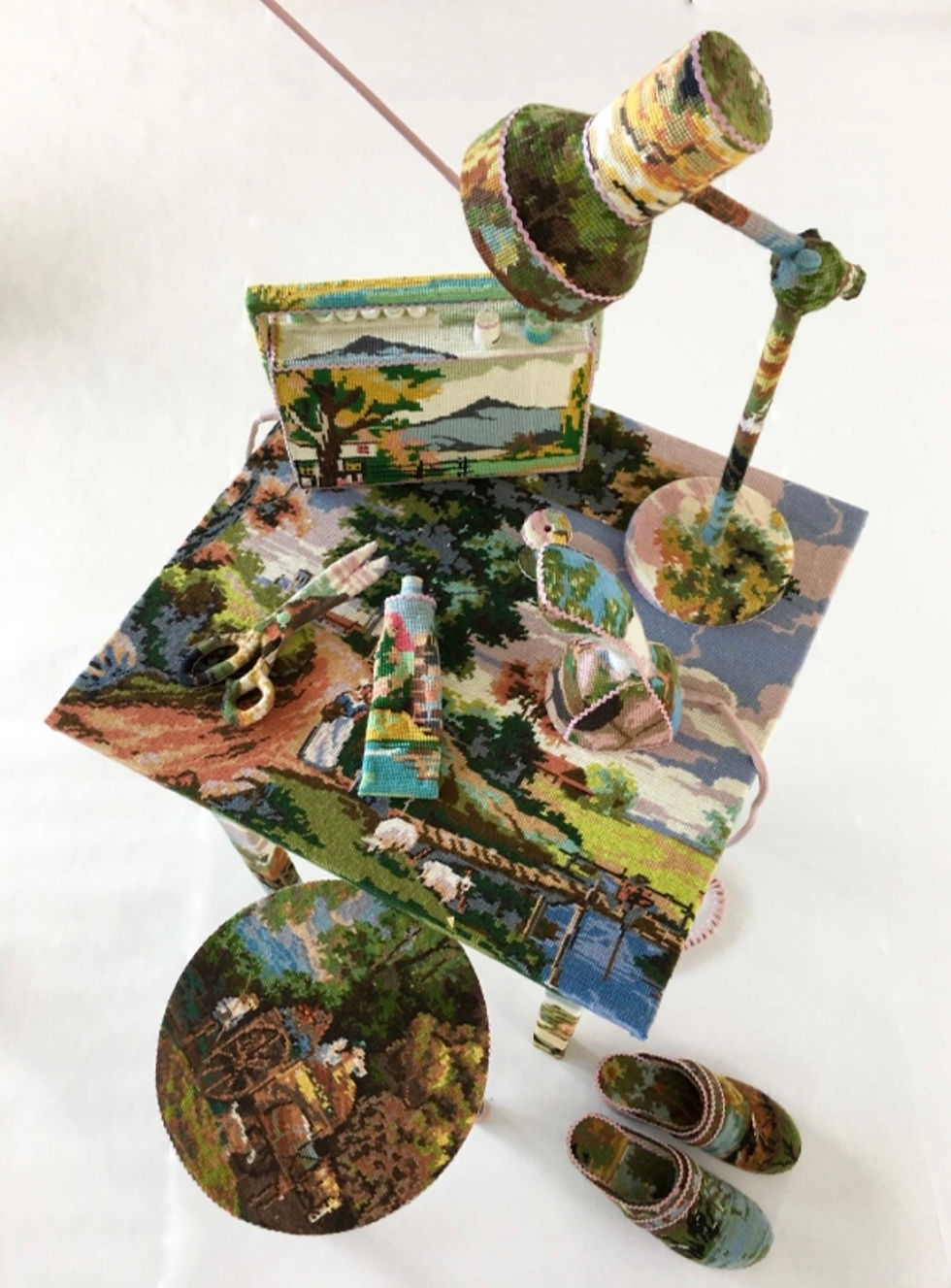Ulla-Stina Wikander
- Monica Blignaut
- Feb 26, 2021
- 2 min read
Artist 301
Ulla-Stina Wikander
Sculpture
Artifacts

Ulla-Stina Wikander (born 1957) is a Swedish artist known for her embroidered sculptural works. She is currently living in Kullavik/Stockholm, Sweden where she also runs a design company called Manussweden.

Her sculptures consist of series of household objects that are covered in colorful, vintage stitchings. She gives new life to old vintage and antique objects.

‘It is rather new for me to be a part of the textile community because I have always regarded myself as a painter and sculptor,’ Wikander explains about her practice. ‘While I do not embroider myself, I am always very meticulous when I choose my patterns. embroidery is very hard to find nowadays, so I often travel to small towns in sweden to find them.’

She explains about her process, ‘I have a big collection with hundreds of embroideries, organized into boxes by motif. I do not know if it is accepted among textile artists, to cut embroideries into pieces, but I think my work is a bit different. I always have a bad feeling that I am destroying a beautiful embroidery that someone else has made, but the recycling of something forgotten also feels current and good’.

”For more then 10 years I have collected cross stitch embroidery and today I have a big collection with over 100 different designs. These embroideries have been made by women and is often seen as kitch and regarded pretty worthless.

I have mixed feelings for them but sometimes they are very beautiful and I want to bring them back to life.

In 2012 I started to cover ordinary household items from the 70s, like a vacuum cleaner, sewing machine, electric mixer etc. I find it interesting to see how these objects transforms in a new context; the obsolet, the things we do not want any longer, the old and forgotten things.

I visit flea markets and vintage stores to find cross stitch embroidery and the objects I want to work with. Some of the small objects, like an iron or a phone take me a day or two to make, but the bigger installations takes weeks to finish.

They become artifacts from a begone era, disguised, camouflaged and dressed. I give them a second life and although I cut the embroideries into pieces, I think they look very beautiful, when they have been ”dressed up”. ‘

#artblog #artistoftheday #artistsoninstagram #artresearcher #celebratingart #investigatingart #blog #artist #art #contemporaryart #artistbio #arthistory #artresearch #contemporary #learning #artinfluencer #UllaStinaWikander #Sculpture #Artifacts

Sources Consulted:

Comments